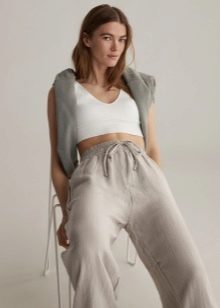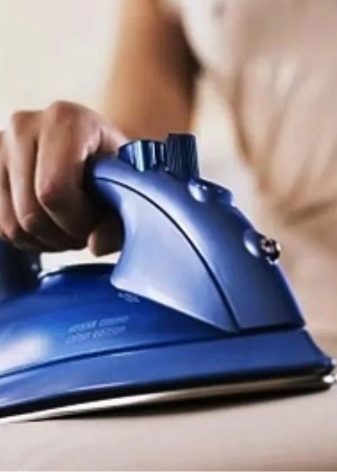All about gauze

Many consumers will be interested in what kind of fabric - gauze, and what is sewn from it. We'll have to analyze the composition, features of cotton and linen fabric, its differences from muslin. It is necessary to pay attention to the white wide material with embroidery and other options.


What it is?
A fabric called gauze is sold, the threads of which are rarely intertwined. This structure allows for the lightness and airiness of the material. The finished matter will be translucent. The production of several subspecies of gauze has been debugged, the specifics of which are the fibers used and the properties determined by them. The main name is due to the visual similarity with ordinary gauze.
Plain weaving of fibers leads to a loose placement of the threads. The weft and warp threads are separated by fairly impressive gaps. This very method guarantees a unique airy structure, for which gauze is appreciated. It is important to understand that the finished matter will give a very pronounced shrinkage, which is usually compensated by the use of specially selected impregnations.
It is necessary to pay attention to the differences from muslin, with which gauze is constantly confused.


The main specificity is already rooted in the manufacturing method itself. For such fabrics, the threads used and their characteristic weaves differ sharply. Muslin is created from longer fibers. Its threads are twisted very tightly. This allows you to achieve softness and at the same time increased strength. The gauze has a looser structure, and at the same time it is coarse, has significant gaps between the fibers.
Such fabric absorbs liquids less than muslin. It is not as strong and not sufficiently resistant to wear and tear. This is especially important for products that are constantly washed.Muslin is stitched in layers in layers, and this allows it to maintain its geometric shape more stable. It is thinner and softer, does not form folds that would rub the skin; summing up the intermediate result, it must be said that gauze is less prestigious.


Views
Typical gauze formulations include linen or cotton. Some manufacturers use viscose or even all-artificial fiber additives. Such impurities increase the strength and wear resistance of the fabric. In addition, blended gauze is more affordable. Sometimes it is made from wool, which allows for a slightly denser structure, but the friability is still preserved. Some firms apply special impregnations. Their composition is kept in strict confidence.
Such means allow you to eliminate washing shrinkage. The gauze is always thin, and only some of its types are relatively thickened. The wool variety is opaque, in many cases it is embroidered or covered with a woven pattern. The cotton-fiber gauze is translucent and soft. She always has a loose structure. Such material is bleached or smooth dyed. In some cases, it also has a drawing.
The reaped variety, also referred to as the reaper or crash, has a “wrinkled” effect.



The surface of such a fabric is chaotically covered with creases and small folds. The header is made on the basis of cotton and linen. Polyester and rayon can be added to the main fibers. The smooth gauze has no caching effect and this is a true classic version. Double gauze is much more aesthetically interesting:
- it is denser and allows only bright light to pass through;
- such matter was loose and factual;
- Mainly use a single color material, can be practiced in blue, white, black, green and yellow tones.

Application
In many cases, summer clothes are sewn from gauze. The elegant appearance is characteristic of the wide white embroidered fabric. She, in addition to her beautiful appearance, is perfectly breathable. High-quality gauze removes water well and provides a pleasant microclimate. Experts advise to give preference to loose cuts and styles, as well as lined products; they are less susceptible to stretching and tearing of the seams.
Summer suits can also be made on the basis of gauze. But more often the linen version of the fabric is released on shirts. This material is denser and more textured than cotton. Gauze fabrics for women’s formal wardrobe are also popular. The lightness and translucency of the fabric predetermines its active use in the summer. It's about sewing:
- skirts;
- sundresses;
- dresses;
- tunic;
- blouses.



Matter drapes perfectly, because the clothes obtained from it flow. These wardrobe items are intended mainly for women. However, ethnic style shirts for men also look good. Wool gauze is suitable for stoles and capes. The canopy and air curtain are predominantly made of cotton and linen fibers.
Gauze material can be combined with other tissues. It goes well with braid and lace decorations. On the basis of gauze, they make excellent outfits in the boho style. The relevance of the fabric in this sense is related to its suitability for the formation of multilayer compositions. It turns out to be quite simple to achieve visual splendor.

Care
Care options are determined by the product mix. Cotton or linen that has not been dyed can be washed at high (up to 90 degrees) temperatures. Use of mild bleaches and powders is recommended. Drying of the fabric is carried out in a flattened form. It hardly suffers from direct light, and it is quite possible to dry it directly in the sun. Cloths of mixed fabrics and those that are dyed must be washed at 30, maximum 40 degrees. The choice of gentle powders is recommended. It is even better to use gels for this purpose. To dry, things made from such fabrics must be turned inside out.
You cannot use the drying mode in the washing machine. Wool type gauze is hand washable. You can replace it with a simulated mode in the washing machine. Again, a delicate gel is used, in extreme cases a powder. For washing, the temperature must be maintained up to 30 degrees. Dry clothes by laying them out on horizontal surfaces, away from direct sunlight.


Iron the wool gauze from the inside out. At the time of ironing, it should be slightly damp. The heating of the iron is always selected taking into account the composition of the material. Ironing and steaming the crumpled matter is completely unacceptable. You can store gauze clothes on hangers, and for long periods of idle time and for transportation, they are placed in special covers.
White and non-bleaching fabrics are sometimes washed with the addition of non-corrosive bleaches. You cannot use such detergents for washing colored fabrics. Drying them should take place in shaded areas. If the woolen gauze is wrinkled and crumpled, instead of ironing it is more correct to tidy it up with a vertical steam generator.
You can iron with a regular iron after preliminary sprinkling; Crumpled fabric is never ironed at all.










